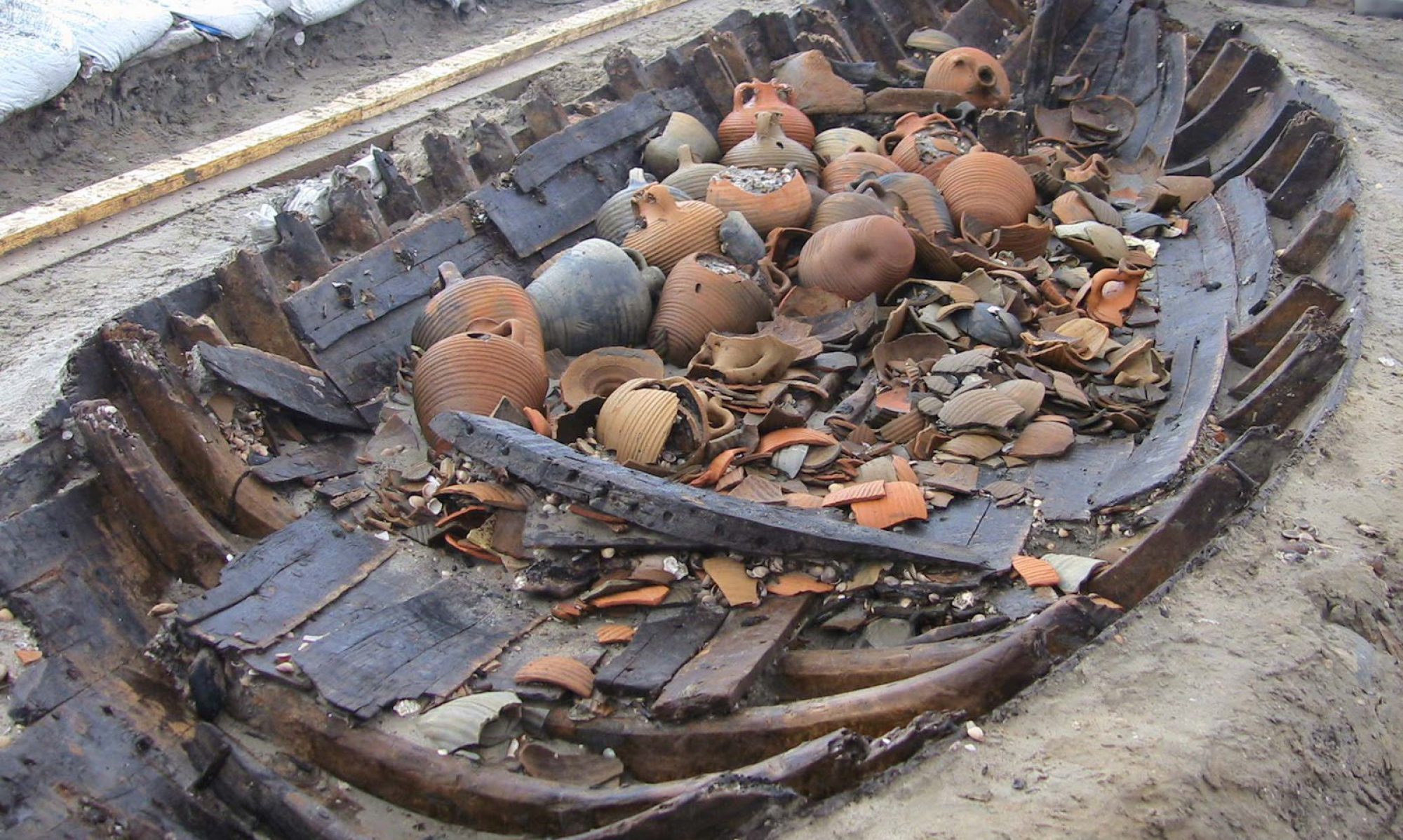
Photograph: British Museum
The real face concealed by a clay mask on the mummified head of a Scythian warrior has been revealed for the first time in almost 2,000 years. The head is on display in an exhibition opening at the British Museum along with the scan, made in a St Petersburg hospital, which reveals that he had fine teeth, a ginger moustache, a pierced ear, a hole in his skull where his brains had been removed, and a savage wound, beautifully stitched and healed, which originally ran from the corner of his eye socket to the point of his jaw.
Since the real head closely resembles the painted mask, the curator St John Simpson assumes that the faintly smiling mask of a young woman beside him, which has yet to be scanned, is also based on her appearance in life.
Her body was found lying beside his in a timber-lined tomb chamber, and she almost certainly did not die a natural death.

The Greek historian Herodotus left vivid accounts of the nomadic Scythian horsemen and archers who terrorised their neighbours from an empire stretching for centuries from the Black Sea to the borders of China. His stories, often doubted, have been vindicated by recent archaeological finds, and he wrote that when a princely warrior died, a concubine was often chosen to accompany him to the grave, along with servants and horses.
“Herodotus says garrotting was used, so that would have been relatively quick and merciful,” Simpson said. “The horses we find in tombs were usually killed by a single blow between the eyes from a pointed battle axe – quite humane, like a captive bolt for a fallen race horse – so that could be another consideration.” He added hopefully: “We do also have to remember that people really do die of a broken heart.”

The scans were completed and processed so recently that they were seen for the first time in London by the Russian curators who accompanied the spectacular loans from the Hermitage museum in St Petersburg, including some of the first superb golden belt buckles and dress ornaments collected in the 17th century by Peter the Great.
The exhibition, Scythians: Warriors of Ancient Siberia, also has loans from the new National Museum of the Republic of Kazakhstan, and the Ashmolean and the Royal Collection in the UK.
The nomads had no writing and built nothing permanent except their tombs, but fortunately buried everything from their world for the dead to use in the next. The displays include not just the superb golden ornaments and metal work including weapons and utensils, but, astonishingly preserved by the permafrost of Siberia, furs, textiles, wooden furniture and containers, tattooed human skin, horse harnesses and saddles, the oldest pair of chopsticks ever found outside China, and two lumps of cheese.
Their luxury imports from China included beautiful silks so precious that even scraps were carefully kept and re-used, including a piece used to trim a child’s quiver of arrows, found with the masked mummies in the Oklakhty burial ground in southern Siberia. There was also a tiny sheepskin coat, on which the man’s head was pillowed.
The same tomb held two even more eerie objects, which Simpson hoped to borrow for the exhibition: literally straw men, two life-size stuffed effigies, with clay masks similar to those on the real heads. They were too fragile to travel, and are still being studied – but the first x-rays suggest they contain cloth bags of cremated human remains, presumably carried on horseback across the plains until they could be added to the bodies lying in the family tomb.

“When I saw them lying in a dimly lit room in St Petersburg, and one of the curators lifted the head – shedding bits of straw – to look at me, it was an image straight out of some Hollywood horror movie,” Simpson recalled. “I put the photograph on my office door as a way of saying ‘keep away from here’ in the last three weeks I was working flat out trying to get the catalogue finished – it was very effective.”

















 Mr Herbert, 55, of Burntwood in Staffordshire, who has been metal detecting for 18 years, came across the hoard as he searched land belonging to a farmer friend over five days in July. The exact location has not been disclosed.
Mr Herbert, 55, of Burntwood in Staffordshire, who has been metal detecting for 18 years, came across the hoard as he searched land belonging to a farmer friend over five days in July. The exact location has not been disclosed. Following the initial find, Alex Jones, director of Birmingham Archaeology and his colleagues were invited to excavate the site, Birmingham University said.
Following the initial find, Alex Jones, director of Birmingham Archaeology and his colleagues were invited to excavate the site, Birmingham University said. The collection is currently being kept in secure storage at Birmingham Museum and Art Gallery but a selection of the items are to be displayed at the museum from Friday until 13 October.
The collection is currently being kept in secure storage at Birmingham Museum and Art Gallery but a selection of the items are to be displayed at the museum from Friday until 13 October.




You must be logged in to post a comment.